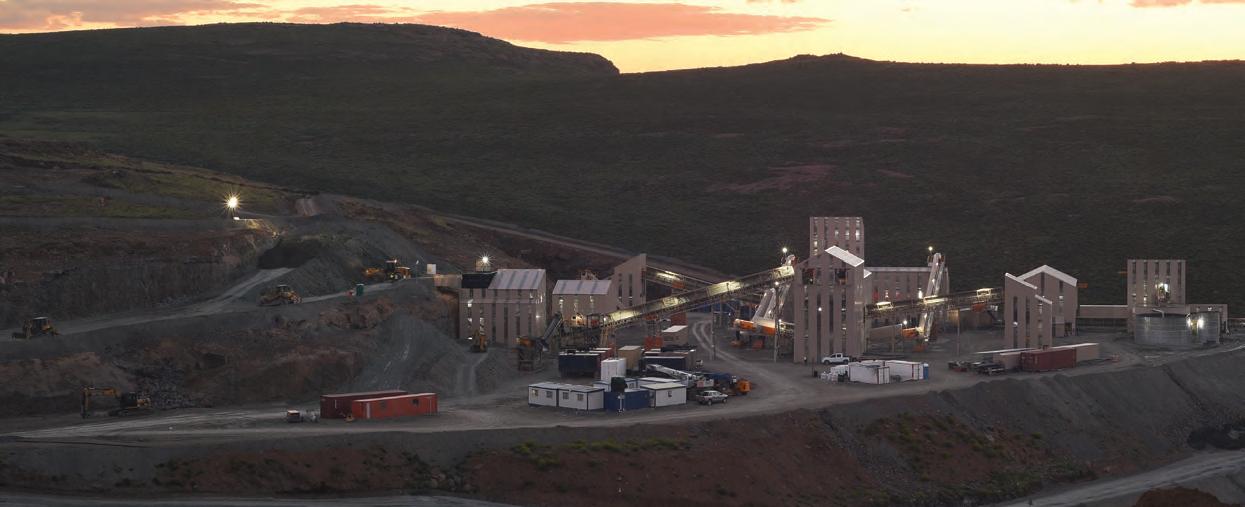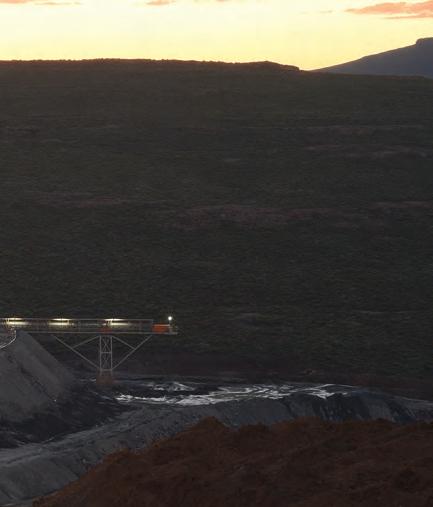
5 minute read
The next wave of Australian diamond miners
A NEW ERA BECKONS FOR AUSTRALIAN DIAMOND MINING
The next wave of ASX-listed diamond miners is emerging with ambitions to put Australia back on the map as a producer of these elusive gems.
When Rio Tinto closed the Argyle diamond mine in 2020 it was not only the end of an era for the major miner but also for Australia as a producer of the resource.
Rio Tinto operated Argyle in the East Kimberley for 37 years, producing more than 865 million carats of diamonds, most notably the coveted pink diamond.
Argyle kept Australia at the forefront of global diamond mining until the end, including as the world’s second largest producer last year, according to the Western Australian Department of Mines, Industry Regulation and Safety (DMIRS).
The DMIRS revealed in its latest statistics digest that Western Australia’s diamond sales increased to 17.4 million carats ($225 million) in 2019-20, which was the state’s highest level in more than a decade after an increase in Argyle’s final output.
However, the DMIRS also expects domestic diamond production to reach near zero following Argyle’s closure.
And while Australia diamond production may remain almost non-existent in the foreseeable future, there is hope on the horizon that the country will again rise up the ranks of producers.
The ASX still hosts a handful of diamond companies, with Lucapa Diamond Company one that has successfully pursued international operations in recent years.
Lucapa has, however, increased its diamond interests closer to home with the acquisition of the Merlin project in the Northern Territory.
According to the Territory Economic Reconstruction Commission’s final report from December 2020, the Northern Territory hosts the second highest amount of known diamond resources in Australia.
This could see diamond miners take advantage of the government’s support for growing its mining industry.
In May, Lucapa agreed to acquire the Merlin diamond project from Merlin Operations for $8.5 million.
The Merlin mine has a storied history in the Territory, being home to the largest diamond ever discovered in Australia in 2002.
It still contains a 4.4-million-carat joint ore reserves committee (JORC) compliant resource, which represents an acquisition cost equal to $2 per resource carat. Lucapa aims to bring the mine back into production in 2023.
“When Merlin is brought into production it will be Lucapa’s third operating mine and when fully operational, it will significantly increase the quantity of diamonds being produced by Lucapa as a group and elevate Lucapa to a mid-tier producer,” Lucapa chief
executive officer and managing director Stephen Wetherall says.
“At throughput levels currently being scoped in the development plan, Merlin will also become the largest primary source diamond mine in Australia following the closure of Argyle.
“It has the distinction of being the source of the largest known diamond recovered in Australia when it recovered a 104-carat type IIa D colour diamond, and from what we see, there is potential for further large highvalue stone recoveries in the run of mine production, which itself has a value well above the world average.”
Lucapa is undertaking scoping studies at Merlin for the 10 kimberlite pipes contained in the resource.
The company’s development plan will adopt an innovative vertical pit mining methodology along with open pit and underground mining across the pipes.
Wetherall is confident that Australia remains a strong country for diamond discoveries, with the company also actively exploring its Brooking tenements in Western Australia.
“History has shown that Australia can produce high-quality high-value diamonds, and the closure of Argyle has left Australia without a commercial scale producing diamond mine,” Wetherall says.
“We are looking forward to changing that. Australia has vast areas that have not been fully explored and we see potential for further discoveries at Brooking and on the Merlin mining tenement and surrounding exploration tenement as identified anomalies and targets are drilled and further exploration is conducted.”
Western Australia’s attraction as a diamond mining jurisdiction has also been improved by a reduced diamond royalty rate, with the state government cutting diamond royalties from 7.5 per cent to 5 per cent in 2020.
The DMIRS states this was implemented to ensure all diamond miners have the same royalty rate as Argyle did, boosting the attraction for further diamond mines to come online in the absence of the historic Rio Tinto site.
Burgundy Diamond Mines is also growing its Australian focus after Argyle’s closure. The company this year secured an agreement with Gibb River Diamonds to acquire the Ellendale project in Western Australia.
Ellendale is a globally recognised site, with its past production including more than half of the world’s fancy yellow diamonds.
Burgundy’s plan is to restart production of fancy yellow diamonds at Ellendale in 2022 and cut and polish them at a purpose-built facility that it acquired in Perth this year.
According to Burgundy managing director and chief executive officer Peter Ravenscroft, the company will take an unconventional approach with its growth strategy, including the establishment of the cut and polish facility.
“It was an evolution of ideas, actually. As we started looking at Ellendale, we realised a lot of margin went to downstream as it always does in diamond processing,” Ravenscroft says.
“If you focussed on fancy colour diamonds, you’re working in a very small niche and there’s opportunity to do things differently in that niche.”
Ravenscroft says Burgundy followed the blueprint of Rio Tinto’s processing facilities for its Argyle pink diamonds with the move into downstream cutting and polishing.
Burgundy received great support from the market in raising $50 million earlier this year to fund the evolving strategy.
Until production restarts at Ellendale, the company will start cutting and polishing fancy colour diamonds from third parties and will continue to offer this service after Ellendale is operational.
“We’re very excited about the potential and this focus on the small niche sector gives us the opportunity of establishing a unique end-to-end diamond business. We are now seeing ourselves as a company that produces and sells polished fancy colour diamonds, with an upstream business growing a supply of fancy colour rough stones,” Ravenscroft says.
So while Australia may no longer be a global diamond producer of note, the country does have prospects on the horizon through the likes of Lucapa and Burgundy.
And Australia’s pink diamonds from Argyle remain as popular as ever, with the inaugural Australian Diamond Portfolio Pink Diamond Index (ADPPDI) showing they have increased by 30 per cent since the site was closed.
Argyle has left a legacy that looks set to continue growing as the emerging next generation of diamond miners look to build a sustainable sector for the future.


Rio Tinto workers at the Argyle mine. Image: Rio Tinto.










